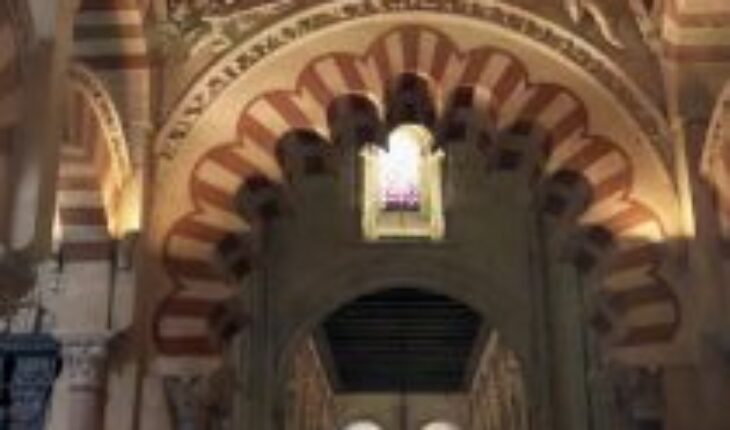Miniseries “Al Andalus: The Legacy” in History 2
Thursday, March 10 – 22:00 hours.
Via History Channel 2.
The traces of the peoples commanded by caliphs, their monuments, uses and customs, who sowed European lands since the eighth century, are still in force and are glimpsed in “Al-Andalus: The Legacy”, the new series of six episodes that will be broadcast from next Thursday, March 10 by HISTORY 2 and will cover disciplines that had great oriental influence such as medicine, mathematics, architecture, agronomy, engineering and art, among other branches of culture and science.
The indelible mark that, since the year 711, left that pioneer army of Arabs and Berbers (from North Africa) when crossing the Strait of Gibraltar to conquer a Hispania inhabited by Visigoths who professed the Christian faith. Today, the character of Spaniards and Portuguese is an Andalusian legacy: that of coexistence over the centuries between Christians with Muslim and Jewish minorities who dragged their customs to the Iberian Peninsula.
Counting on the testimony of experts such as professors of literature, mathematicians, research professors, historians, architects, engineers or specialized writers, the melting pot of voices that runs through “Al Andalus: The legacy” contextualizes the circumstances in which the most notable discoveries were developed during centuries of Islamic tradition in present-day Spain and Portugal. With period drawings, shown in high resolution or old digitized texts, together with the exhibition of ancient elements from several centuries ago, this documentary reveals a complete documentary dynamic chapter by chapter.
As for gastronomy, the Andalusian diet has a lot to do with the Mediterranean diet since it revolutionized with the incorporation of the products of the land (and revolutionized the irrigation system through drip) taking into account that before there was a food base governed by fish and then complemented by the consumption of birds. In addition, the use of fermented dairy, eggs and sweets reserved for important occasions was enhanced.
In “Al-Andalus: The Legacy” also details the triumph of the Islamic model is the conception of Medina Azahara, as a proclamation of the first Andalusian caliph Abderramán III and a representation of paradise on land. Built in 90%, with materials obtained 50 km around the city of Cordoba (religious epicenter) this symbol of power prevailed with the use of the arch in caliphal architecture and ornamental rocks.
Another of the curiosities of the documentary is to delve into millenary techniques such as the one implemented by Mohamed Al-Gafequin: perform cataract operations. With the use of an awl with a triangular head and without anesthesia, this famous doctor recommended lard, rose oil and a bandage suitable for the postoperative period of the patient.
As for mathematics, translations of Muslim texts brought algebra and algorithms to a peninsula that was surprised by the use of trigonometry: the art of solving triangles. The Islamic legacy was also seen in the creation of automaton mechanisms, which is still in force.
The arrival from the East of the blood wheel or gunpowder, crucial to the war, was complemented by the landing of the Arabic language, another key tool of conquest. Of the 88,000 words of the Spanish language, 4,000 have Arabic roots. An example? The term “hopefully”, derived from InshaAllah (“God willing”) or Law sha’Allah which means the same thing. The Arabic gene in musical instrumentation also had a great influence in Spain and throughout Europe with elements such as the lute (the basis on which the musical theory of the time was created), the qanun (a zither that was played horizontally), the vendir (a pendero), the rebab and the santur.
EPISODES “AL ANDALUS: THE LEGACY”
THURSDAY, MARCH 10
#1 ENGINEERING (#1 ENGINEERING)
Twenty-first century society is largely built on the pillars of engineering and technology. What very few know, is that the basis of many inventions and gadgets that we use daily were already known more than 1,000 years ago in Al-Andalus. The inhabitants of the Iberian Peninsula brought from the East gadgets such as the blood wheel or gunpowder, a chemical compound that changed the war forever. In addition, they also developed automaton mechanisms that continue to influence robotics today.
THURSDAY, MARCH 17
#2 MEDICINE (#2 MEDICINE)
The medicine we know today would be very different without the legacy we have inherited from al-Andalus. In the Iberian Peninsula, medical knowledge was applied that continues to amaze 10 centuries later. In the Middle Ages, we will see that the Andalusians were capacIt is to operate cataracts, they knew how to cauterize internal bleeding and even dared to perform cosmetic surgery interventions.
THURSDAY, MARCH 24
#3 AGRONOMY (#3 AGRONOMY)
Many of the fruits and vegetables that we consume daily came from the hand of the Muslims who lived in the Iberian Peninsula for almost 8 centuries. In addition, they revolutionized the way of cultivating and irrigating the lands of present-day Spain and Portugal. For example, it was they who implemented drip irrigation: a way to manage water in a sustainable way that is used today in much of the planet.
THURSDAY, MARCH 31
#4 ASTRONOMY AND MATHEMATICS (#4 ASTRONOMY AND MATHEMATICS)
The exact sciences experienced a real revolution under the reign of emirs and caliphs in the Iberian Peninsula. From the East came to Al-Andalus trigonometry, sexagesimal calculus, algorithms or algebra. These branches of mathematics that we have inherited from the Andalusians are essential for engineering and technology. Thanks to them, we have applications on our mobiles, we enjoy video games, GPS tell us how to get to the desired direction and we manage to place the satellites in an exact position in space.
THURSDAY, APRIL 7
#5 CULTURE AND CUSTOMS
The Andalusians who lived for almost 8 centuries have left a deep mark on the uses and customs of the current inhabitants of Spain and Portugal. Iberian gastronomy would be completely different without the heritage of Al-Andalus. In addition, they were responsible for paper, chess or the Arabian horse to reach the Peninsula, and promoted the Spanish musical culture, laying the foundations of what is now flamenco.
THURSDAY, APRIL 14
#6 ARCHITECTURE AND ART
The Alhambra in Granada or the Mosque of Cordoba testify to the grandeur of the architecture in Al-Andalus. A secret that has hidden for centuries the Patio de los Naranjos of the Mosque of Cordoba.





